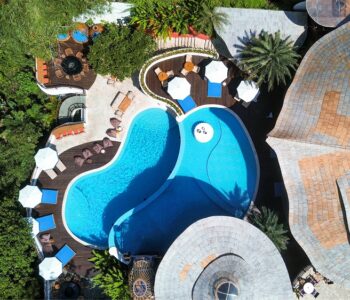Locked way in the vicinity of Tampaksiring, Tirta Empul is one of a series of ancient and holy temples that draws the crowds every day of the year. The name, which means “holy water spring”, is bestowed on this source of holy water, which feeds a series pools and fish ponds.
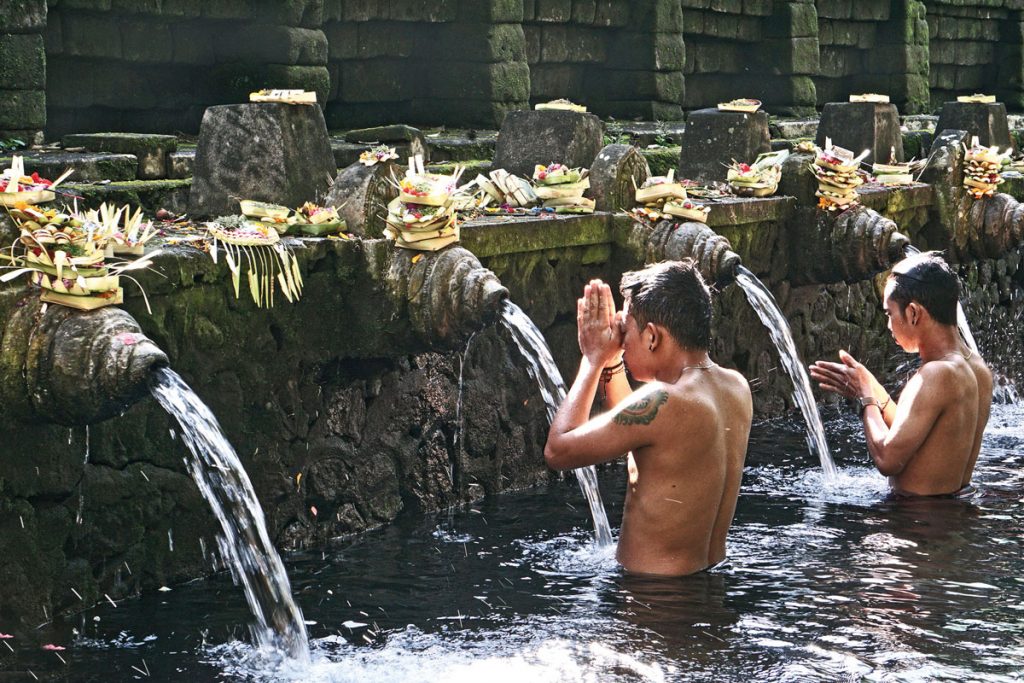
A group of temples surrounded by ancient temple trees complete the complex. The waters flow to the Tukad Pakerisan River, a holy river which flows through the ancient sites and archeological relics that dot this ancient kingdom and was first discovered and created by holy men or rishis, drawn to the extraordinarily powerful energy of the site. Local myths and legends hang in the air.
Three main divisions define the temple complex: A front section has tropical gardens and a park like atmosphere belying the fact that this is an ancient site. Statues and tropical plants lead to the entrance while perched up above is the presidential palace, Istana Tampaksiring, built by Indonesia’s first president, Soekarno. He would spend time, so the story goes, looking down from this high position, to watch the beautiful girls bathing below.
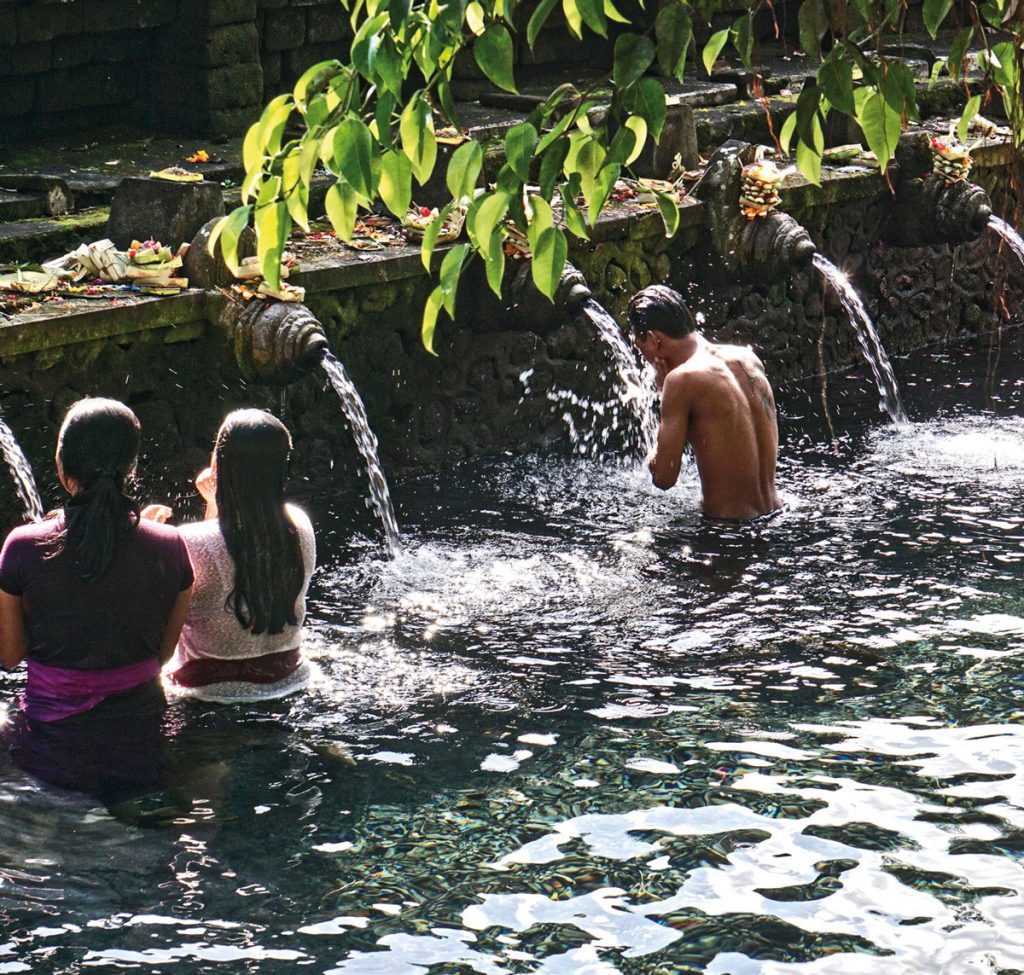
Stepping through an ornately adorned ‘candi bentar’ (temple gate), you enter a vast walled courtyard and bathing pools where a large ‘wantilan’ or meeting hall stands awaiting the guests that crowd there during special days.
Inside the central courtyard, referred to as ‘madya mandala’ or ‘jaba tengah’, pilgrims first approach the rectangular purification bath where 13 elaborately sculpted spouts line the edge of the pool. After prayers at an accommodating altar-like shrine, pilgrims and an increasingly large number of foreign visitors descend the stone steps to enter the crystal-clear, pure, cold mountain water. With hands pressed together, each pilgrim bows under the gushing water of the first spout, following the ritual at each of the eleven cascading water spouts. The water from the last two of the 13 are reserved for purification purposes in funerary rites.
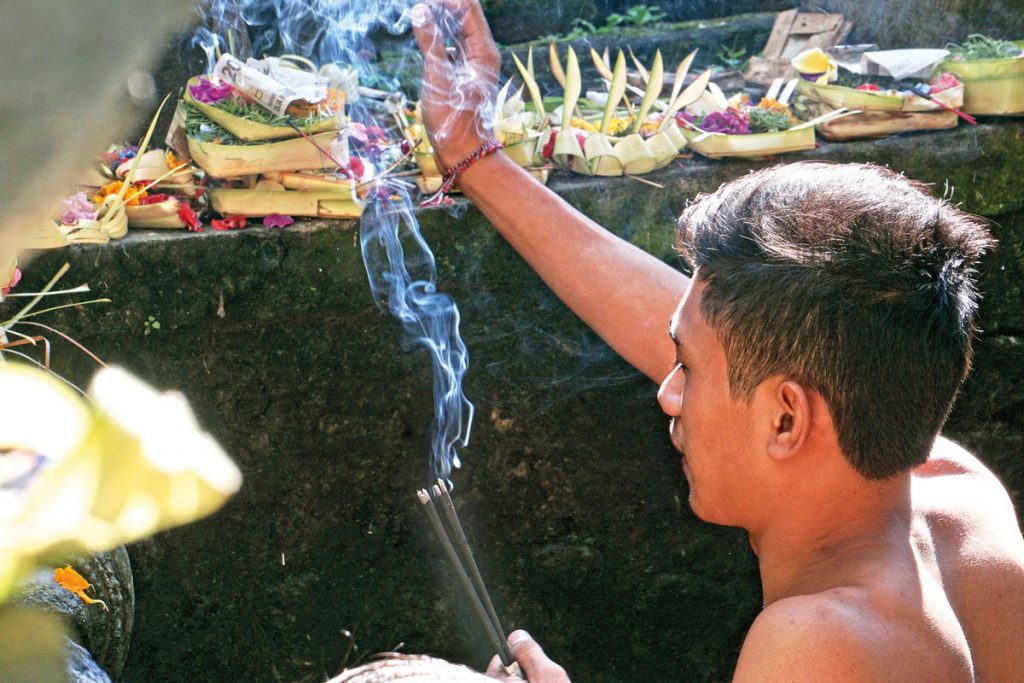
This beautiful site draws groups of people to take the waters every morning. On special holy days people arrive in droves to receive blessings, pay respects to the gods and bring offerings, to pray and partake of the holy waters – rather like the ancient Romans did in their day.
The compounds exude a very peaceful air and it is easy to spend time just gazing into one of the pools, or enjoying a coffee while meditating on the size of the mind-blowingly huge carp that enjoy total sanctity in the crystal clear waters.
This national cultural heritage temple complex is not new, in fact it has been there for more than 1000 years – since 992 AD the legend has it. It has seen many dynasties and kingdoms pass by and witnessed much history over the years.
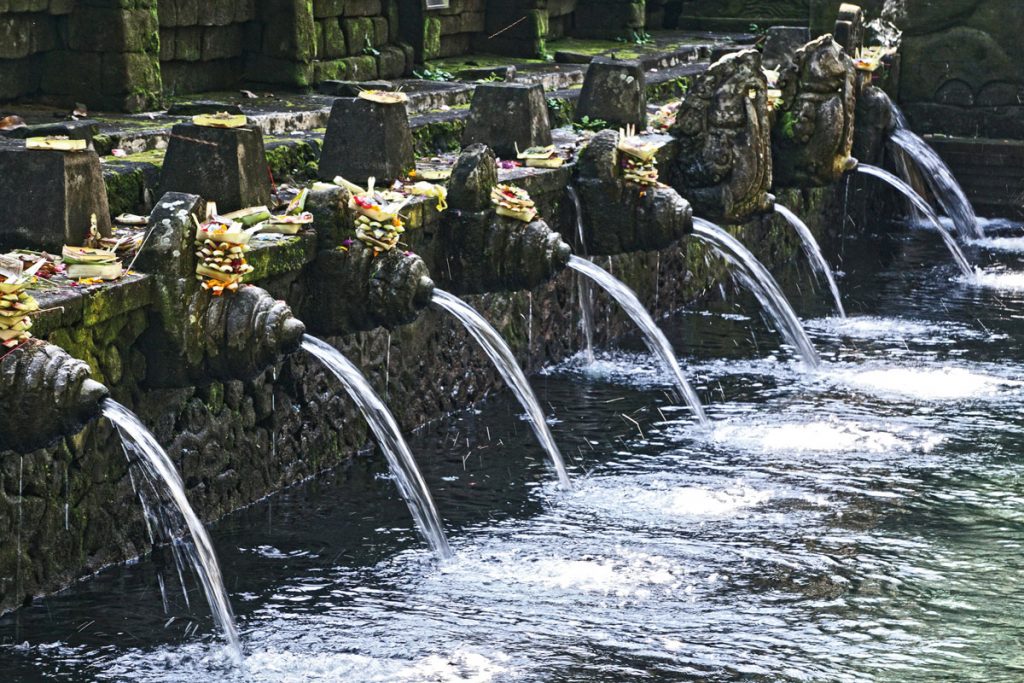
As with most temple complexes, the best time to visit is early morning, as early as you can muster, when the atmosphere is strongest and the crowds are less. Take time to wander about and enjoy the simple beauty, while dreaming of the simpler times of days gone by.
Take a car with a driver to enjoy more freedom, although tours are available. You can also visit several other holy sites in the vicinity and it is a worthwhile day out, far from the manufactured entertainments of the more populated tourist areas.


